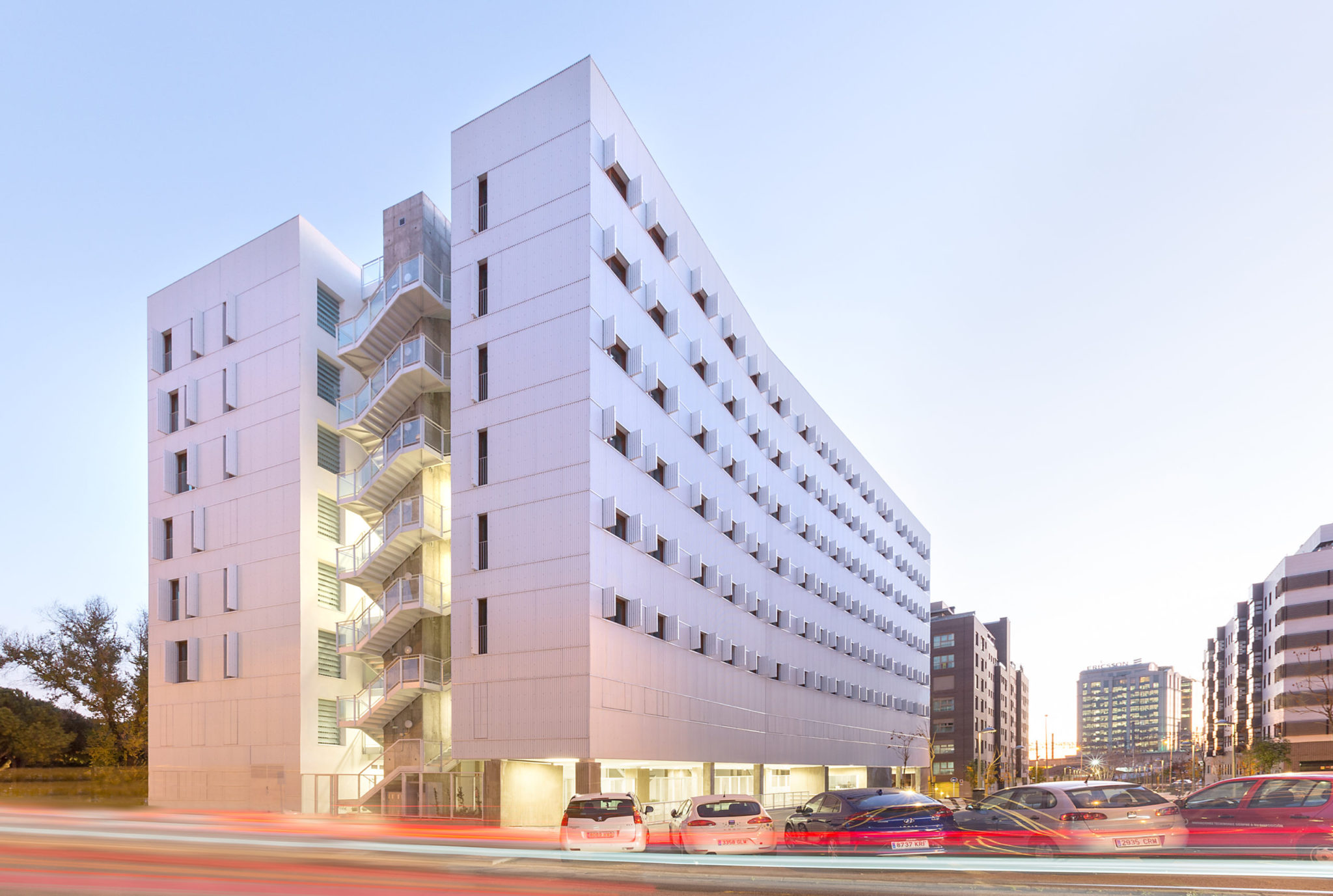From an architectural design stance, opening the conscience to nature may involve embracing it. Its way of understanding processes, materials and meanings, since it’s there where nature’s capacity exceeds all human expectation. Biometric design enables designers and architects to engage with nature, in morphology and production processes. However, beyond its magical wisdom, there is a deeper understanding. It is the design and outcome that contain the soul and the meaning that nature encompasses.
It is in this infinite inspiration and acceptance that nature provides that one of the most influential figures of the 20th century can be found. A master of the Modern Movement, Alvar Aalto signifies surrender to nature in its most complete state. Sustainability, respect and understanding of the environment. This is what he transferred to each of his design pieces and to each of his architectural projects.
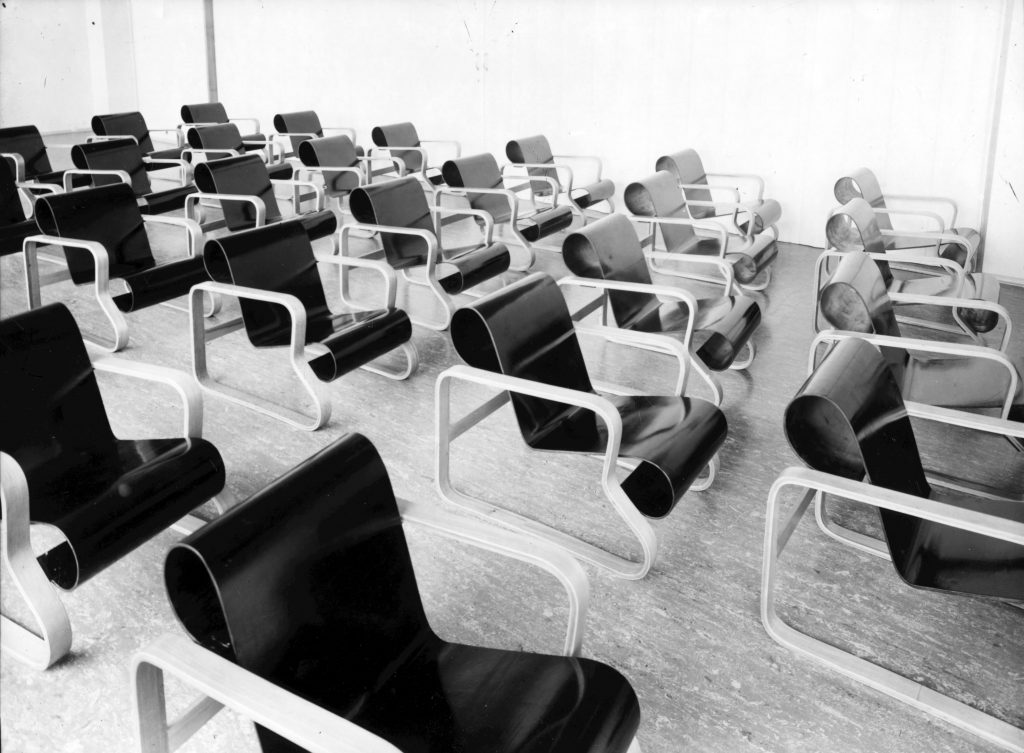
Paimio Sanatorium, where Alvar Aalto designed the architecture as well as the furniture inside.
In The Decorative Surfaces, we provide a personal view of Alvar Aalto’s creative process to show that nature is a complete concept: design, function, process and understanding. As that is what human beings live from, the Finnish designer and architect represented a breakthrough in organically influenced furniture. A magical (and necessary) inspiration that has reached today’s age, allowing us to understand the mystical wisdom hiding behind the design of each of his pieces.
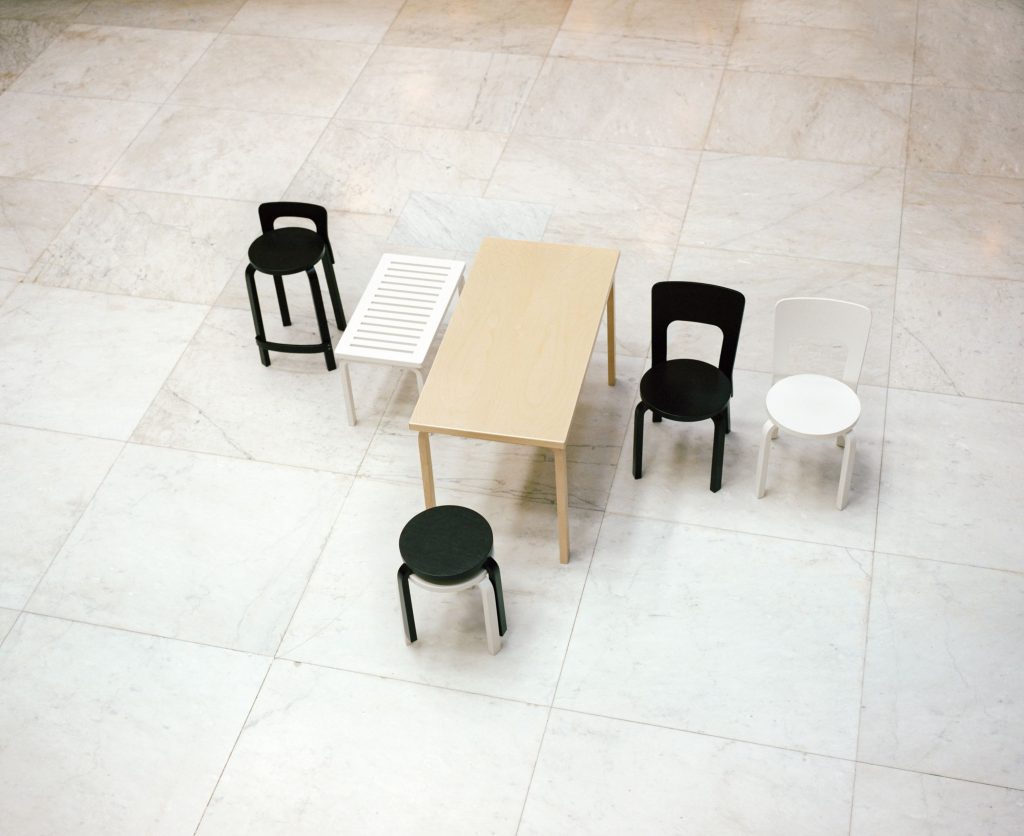
The L-leg technique, patented by Aalto in 1933, meant that the warm, organic properties of wood could be used to make strong, stable designs. (source: https://www.artek.fi/)
A Meaning of Life: Nature
Finnish-born Alvar Aalto (1878-1976) marked a real milestone in the field of architecture and design with his outstanding pieces where there is a clear common denominator: nature. It is through his materials and morphology that this architect, designer, sculptor and painter unfolds the meaning of life. Embracing the environment that is printed onto today’s age, using characteristic ready-made designs that do, however, democratise the exclusive.
Materials, Shapes and Meanings.
From Finnish origins, Alvar Aalto studied architecture with a strong scenic influence where tradition gave him his own identity that he transferred to the Modern Movement of his time. Influenced by Le Corbusier, his architectural projects do not upset the environment, but rather embrace it, understanding it as a complete concept. However, alongside that personal identity that defined him, his morphologies embraced the Bauhaus geometric shapes from a much more organic, natural aspect.
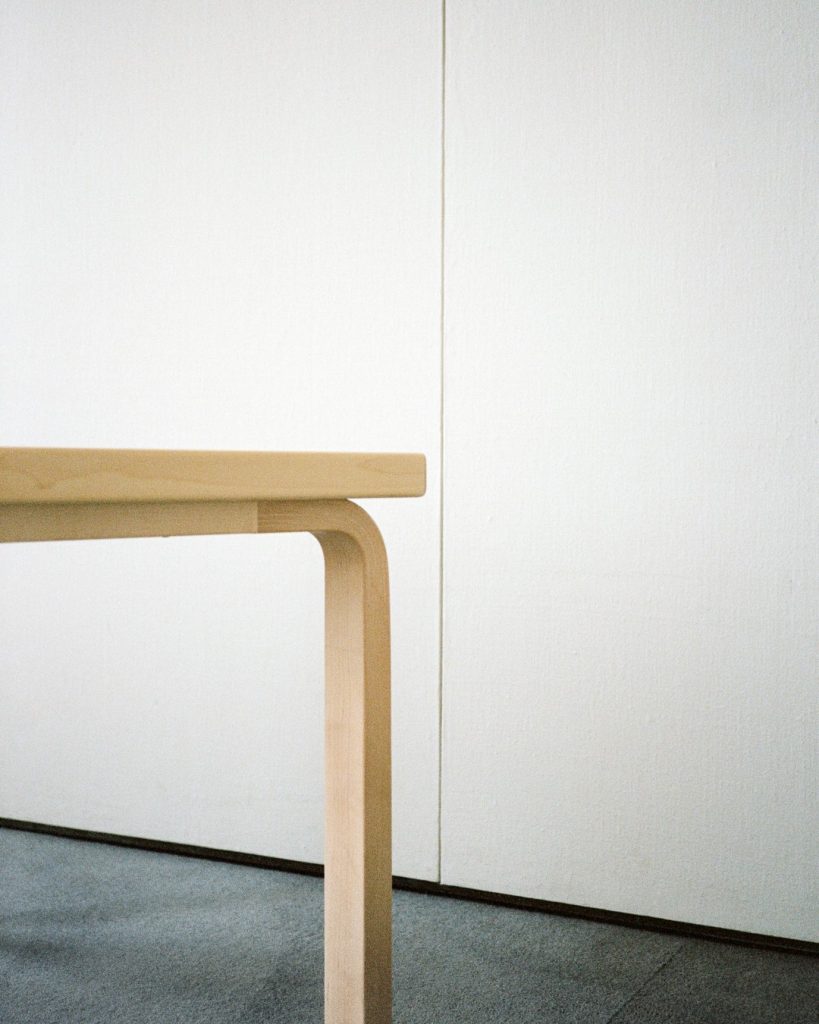
Towards the end of the 1920s, architect and designer Alvar Aalto began to experiment with bending wood. Working alongside furniture maker Otto Korhonen, the Finnish master developed an innovative process that led to the L-leg. (source: https://www.artek.fi/)
So, in all his projects he adopts a clear curve morphology. He uses this to express movement while focussing on the importance of looking from the human to the divine. A clear example of this is the movement he gives to the altar in the Heilig Geist Kirche, an evangelical Lutheran church in Wolfsburg.
From the Traditional to the Modern
His undeniable projection of nature is what caused him to take a material from what would become his biggest legacy. His defence for using materials from the land was to perfect them, to give them human meaning. As such, birch timber became his favourite material. And with this material he achieved great independence to create a new style of architecture. A new traditional design that heads towards the modern.
Using birch timber, he experimented with bending and curving, with everything that nature and the environment of his origins provided him with from the woodlands. So, he brings it into his buildings with omnipresence.
“Alvar Aalto was inspired by nature and his environment and preferred to use natural materials. He used to say that every piece of furniture that comes into direct contact with the human body simply had to be made of natural materials. That was something that he could not compromise on.”
Beyond the shapes and the material, there was a clear feature that marked his design philosophy. That was the functionalist meaning that he experienced in both his architecture and his furniture design. In the Finnish Pavilion for the 1939 New York World’s Fair, we can see his experiments with a material that is inspired by water and woodland to develop a human idea of architecture.
From humanising architecture to functionalist design.
In his constant work to make architecture more human, his obvious functionalism stands out. With this, he goes much further than the purely technical. As the variation and the growth of nature go beyond the formal, beyond the standard. As such, his architecture and internal spaces display comfort with the environment, but also with the human, making each of his projects a work of kindness.
The Viipuri Library (1935, Vyborg, Russia) arose from his study on human behaviour, reaction and journey. Here we can see the strong synchrony between nature, architecture, design and humanism. Inside, natural light is at play with organic shapes. And the layout of furniture which was considered revolutionary at that time, now is seen as common.
The design of this space was a break-away from the earlier design of this kind of building. It embraces adapting the shape to the uses and needs of human beings. The interior design of the Viipuri Library demonstrates his special ability to create kind, comfortable visits with a classic, but modern vision.
So, the furniture designed by Alvar Aalto in lacquered birch has become a major influence in our century. Furniture that he developed through a company that today still sells his lightweight designs: Artek®.
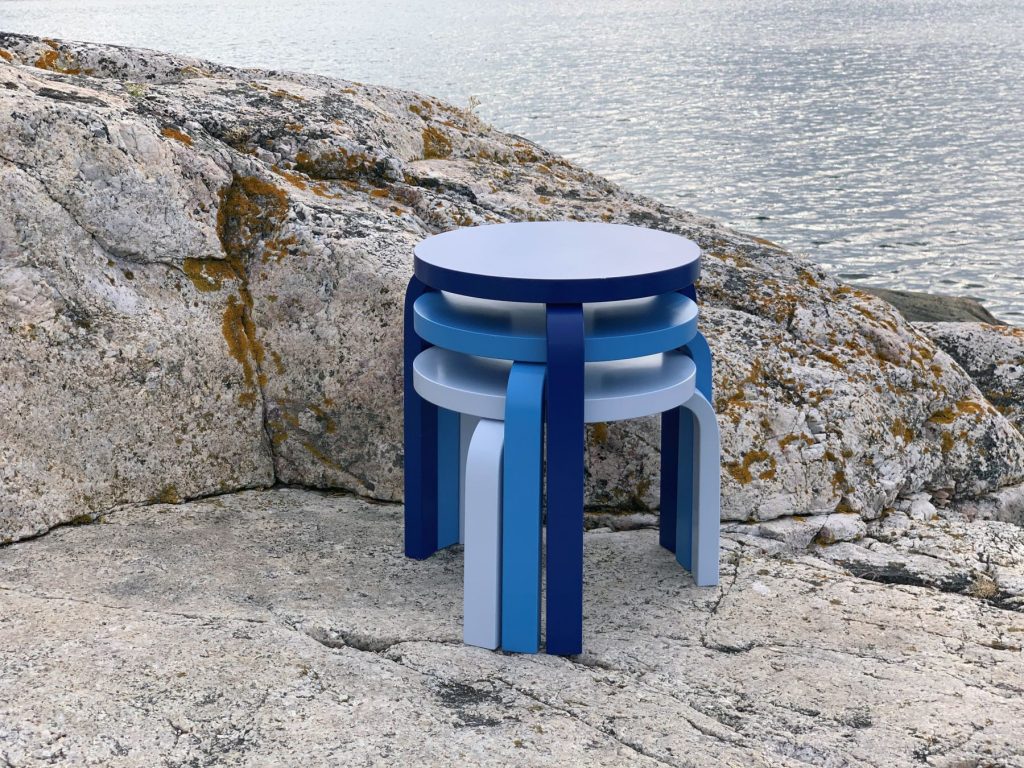
The company Artek still produces Aalto’s designs. Proposed by creative unions, they offer limited editions such as this Stool 60 Nesting Set in collaboration with Heath, respecting the original designs.
Using conceptual simplicity and the nakedness of nature, Alvar Aalto created Artek®, providing function, exclusivity and democratisation in the Modern Movement’s interior design.
Ready-made furniture: Artek®
With the prestige that he conferred on his architectural designs, he continued developing his creativity in natural inspiration, functional design and bent morphology. He created a furniture line that allowed interior design to have exquisite artwork. Founded in 1935, he began to devote himself to producing a series of versatile pieces of furniture, furnishings and lighting.
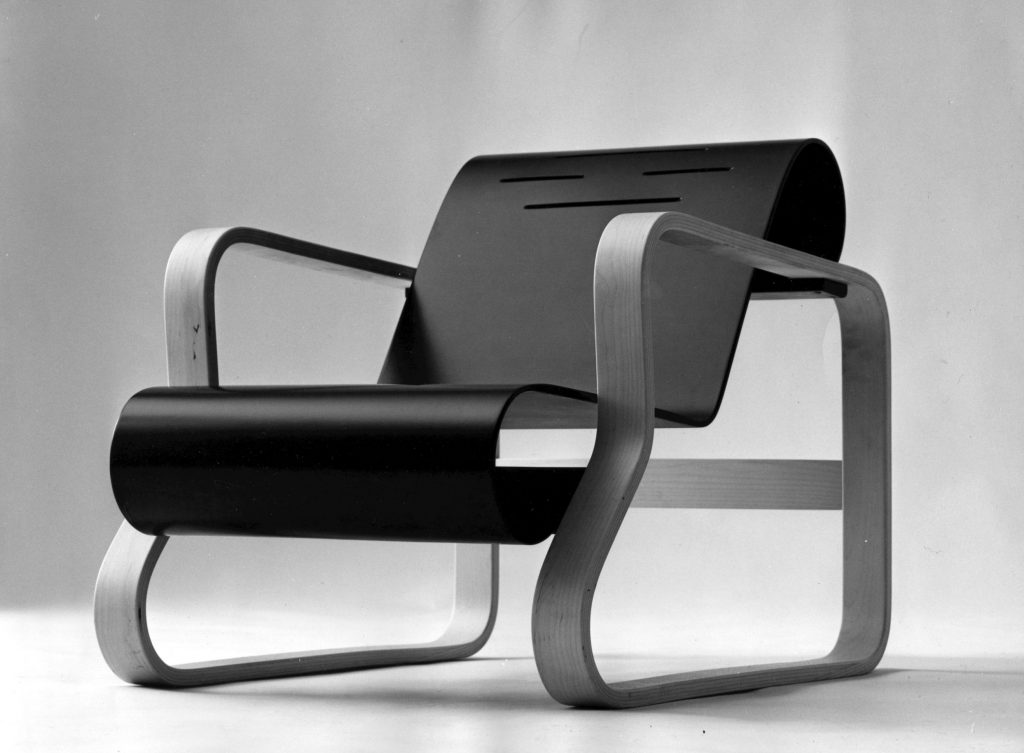
Aalto’s “Paimio” chair has timeless sculptural elegance. (source: https://www.artek.fi/)
Out of all his furniture pieces designed with organic morphology and functionality, the Paimio chair stands out. He created it in 1932 for the Paimio Sanatorium, for which he also designed the architecture. This chair established a new standard in furniture design. It displays Aalto’s combination of tradition and revolutionary design, where the person seated is suspended, appearing to float. The Paimio Chair or Armchair 41 is considered to be one of the Finnish designer’s masterpieces. It was designed to fulfil the function of comfort and pure naturalness that can be seen today in homes and public buildings.
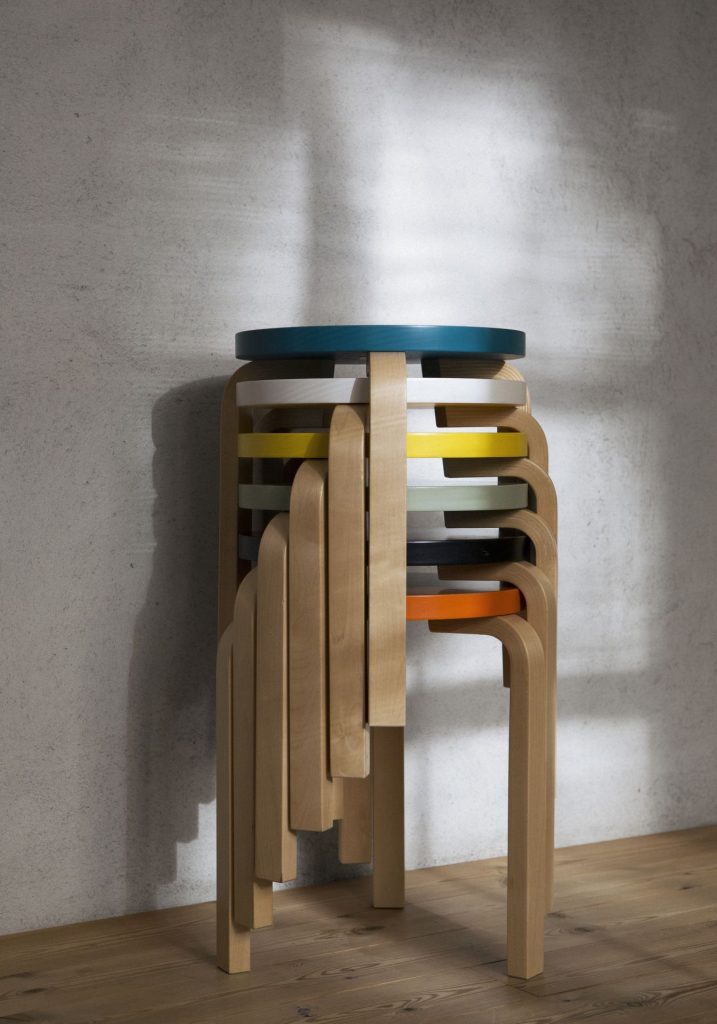
The stool 60 can be stacked to create a tower in a classic, spiral design. (source: https://www.artek.fi/)
A Magical Style Between the Human and the Natural
So, the curves in the birch timber are adapted to human morphology for the purposes of feeling nature itself. This is also seen in another of his mystical designs, designed in 1933. With the Stool 60, versatility and function are combined with the natural appearance, making it one of the most valuable design pieces in history. With the Stool 60, Alvar Aalto configured a three-leg system using a simple structure. It marked a geometric milestone where inside space gives in to human comfort.
The evidence that Alvar Aalto’s designs and philosophy have remained with us until now is more than clear. What is revolutionary about it moves away from technical complications but does not forget the magical style that encapsulates the conceptualisation of these two necessary elements. Embracing the human and the natural. A “less is more” style from the modern architecture of Mies Van de Rohe, is still strongly latent in each of the projects that the Finnish designer and architect accomplished in his designs from his own identity.

